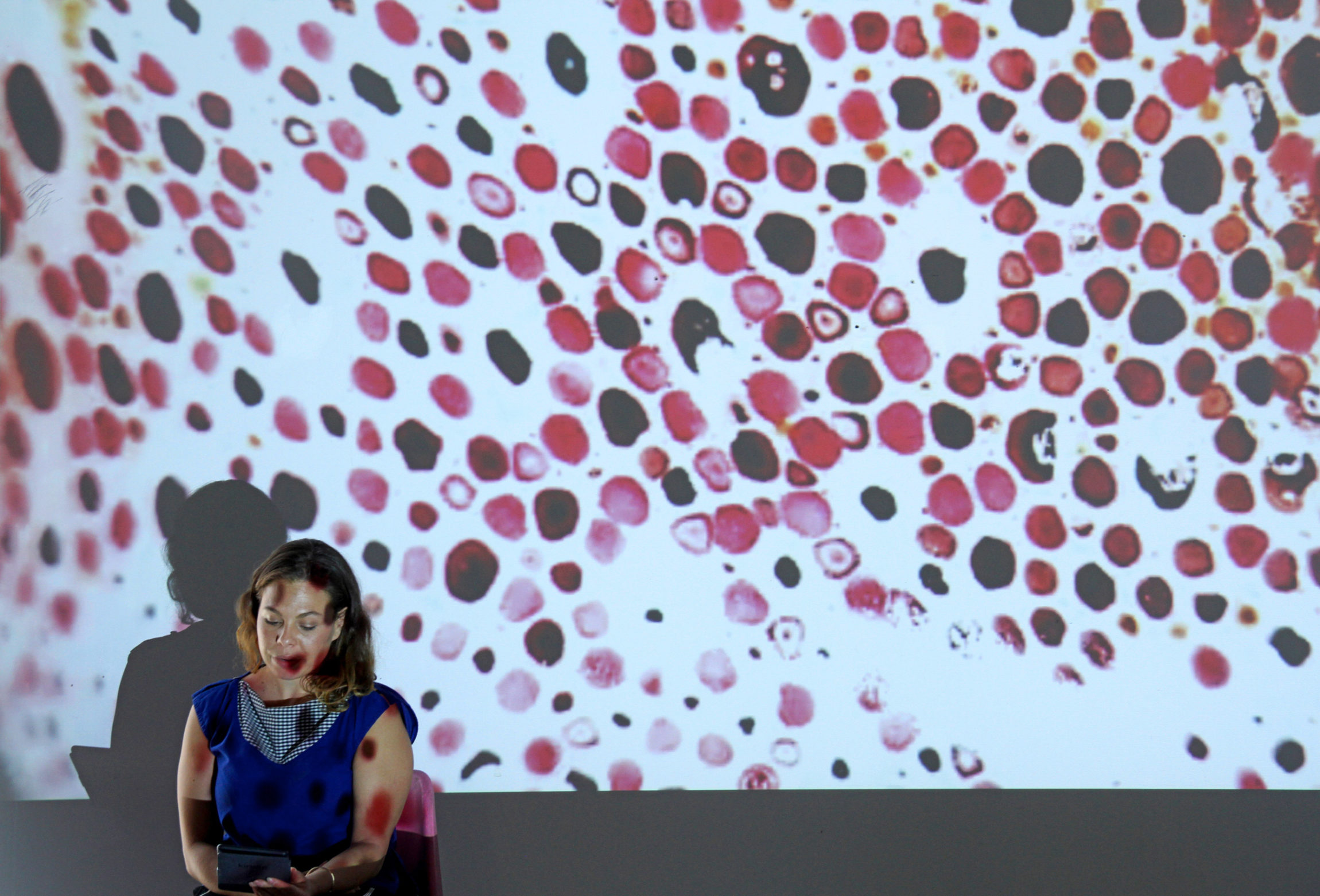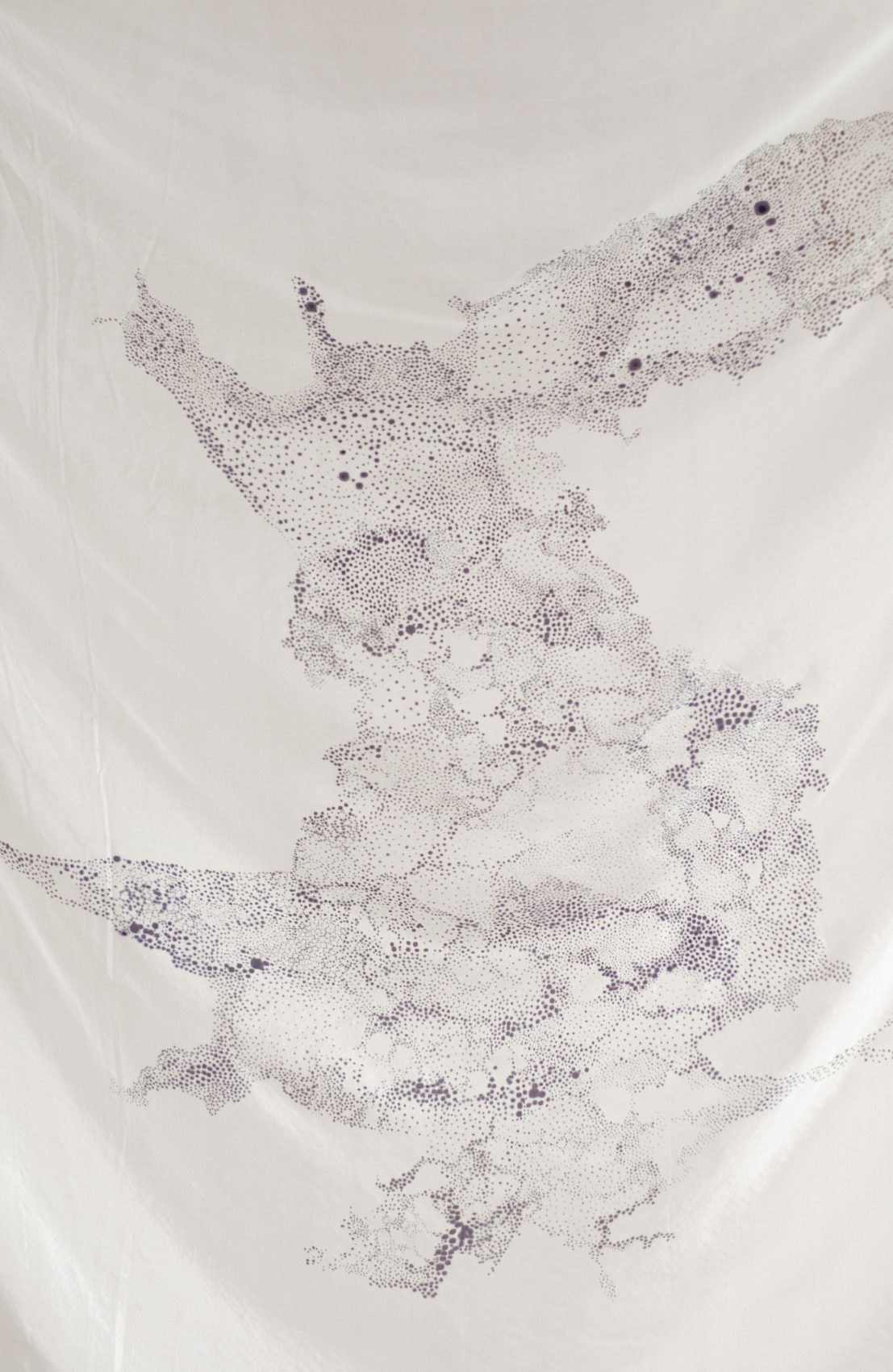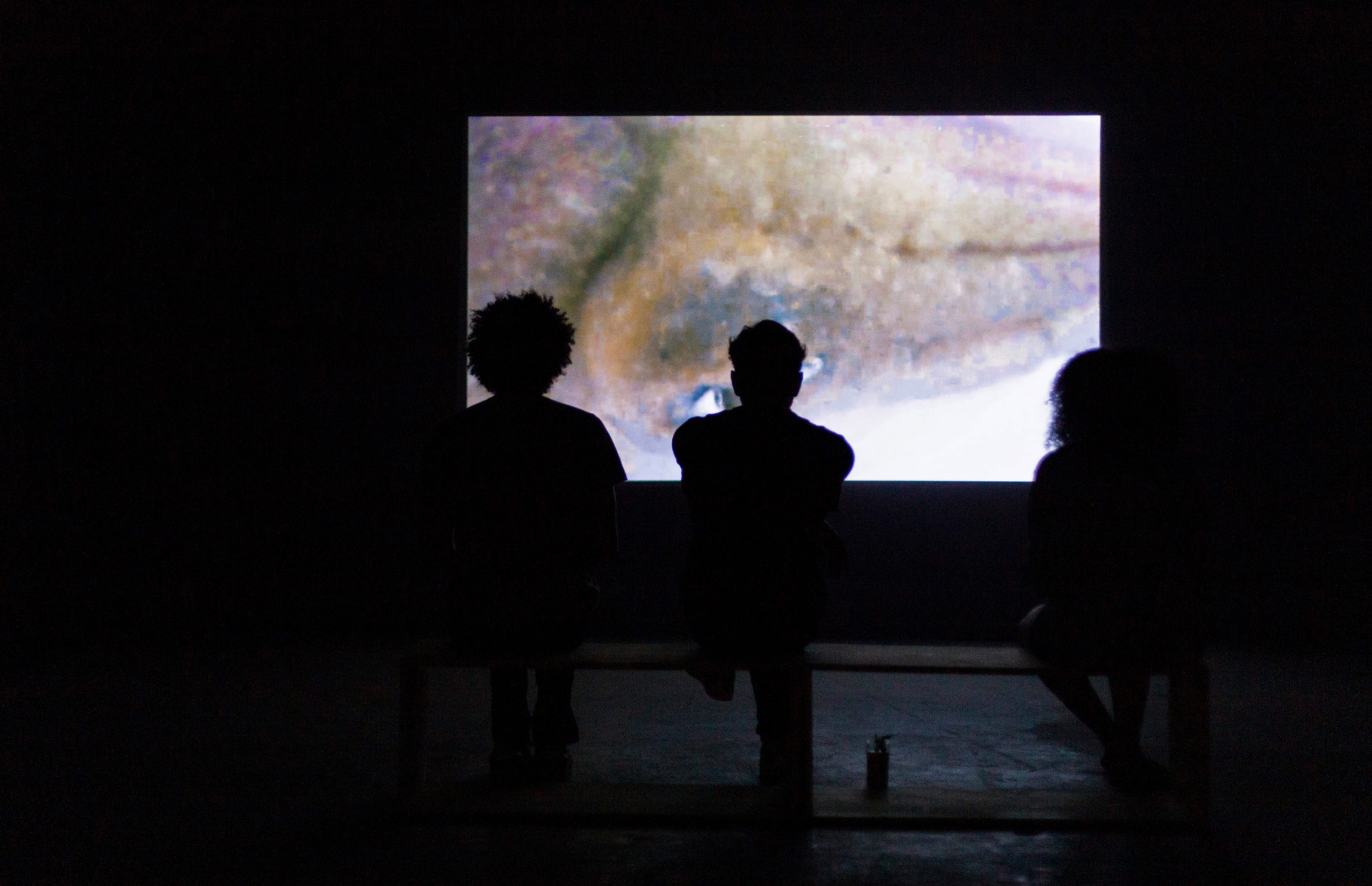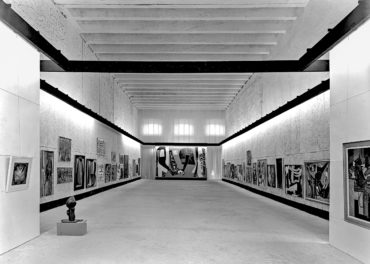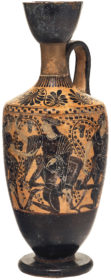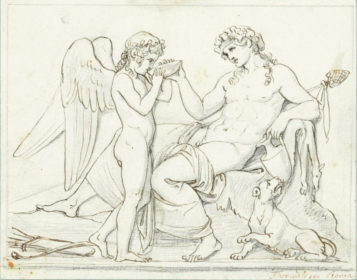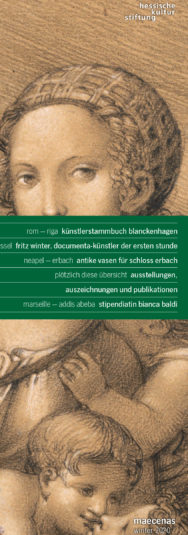scholarship-holder bianca baldi
In sociology the term “passing” refers to the phenomenon whereby an individual may be identified as belonging to an identity group or category outside of their own. This may include racial identity, ethnicity, social class, gender, sexual orientation, religion, age and/or disability status. Casting her lens out into the animal kingdom, Brussels based contemporary artist Bianca Baldi looks to examples of creatures who use the mutability of their skin pigment as a method of passing, for the explicit purpose of self-preservation.
To explore the phenomenon of ‘versipellis’ (one who changes skin or shape-shifts) Baldi presents a portrait of the cuttlefish as both a chimeric creature, and the source of sepia (a pigment often used in photography in the context of archiving) in her poignant and humorous video work Play-White.
Combining personal stories and literary characters, in a study of radical transgressions, camouflage, unspoken sadness and survival, Baldi draws on historical and zoomorphic research to present a compelling meditation on perception, embodiment, self-presentation, and the aesthetic thresholds of identity.
Here Baldi is interviewed by Kate Strain, artistic director of Grazer Kunstverein, where a new iteration of Baldi’s wider project of the same title, Play-White, will be presented as a solo exhibition in Spring 2021.
Kate StrainThe title of your project is Play-White. Where does the term “Play-White” originate? What does it mean and how is it used, and what kind of associations or emotional responses does it tend to elicit?
Bianca Baldi “Play-white” as a noun is a South African vernacular term from the apartheid era which refers to a black or mixed-race person who has succeeded, through deception, to pass as a white person. “So-and-so is a play-white”. I chose this as the title of my video work to bring attention to this old term that has disappeared from our language, along with over 730 000 people of mixed race (counted in the 1950s) that were officially reclassified as white. There is still a degree of shame attached to this term, and by re-appropriating it I hope through my work to question the limits still placed on identity through the chimerical characters in Play-White (2019).
Strain What inspired you to develop the project Play-White?
Baldi In 2018 I staged an exhibition entitled Versipellis after the adaptive quality to change one’s skin described by Louis Hyde in his book The Trickster Makes this World. At this moment I considered this quality more metaphorically but also learnt that for the Greeks, cephalopods were considered the ultimate embodiment of a trickster. With their elaborate chromatophores (colour changing cells) which are deployed for camouflage, masquerade and hunting it made me see conceptual links to what in the human world is called “passing”.
Adopt the mood of the cunning octopus which seems to resemble the rock to which it clings. Now follow along in this direction, now take on a different complexion.
Theognidean Sylloge, 213-218, part. 215-217
Following an initial residency in Marseille, and due to its close proximity to the Mediterranean sea, I saw the possibility of working with real Sepia Officianalis, common cuttlefish, and envisioned staging them as characters in my work Play-White.
StrainHas your own personal/family history and experience shaped your desire to explore the issue of race in the South African and broader context?
BaldiGrowing up in the late 80s/ early 90s in South Africa instilled in me a hyper awareness around questions of race, however there were many personal family narratives which were considered taboo.
“Race reclassification” was a bureaucratic procedure based on three criteria, appearance, descent and acceptance. One could apply to be reclassified and your race was then administered within the machine of apartheid legislation.
To paraphrase Susan Sontag in her essay on Camp, to speak about passing (for white) would therefore betray it, or rather expose it. It is from this perspective that many years later, I sought out similar narratives through literature and fiction which allowed me to begin to broach my sensitive family fictions and amnesia about passing.
Literature and fiction seem perfect places to look for representations of issues that are difficult and complex to speak about in a direct manner.
Strain Through your research you encountered many characters such as Clare, in Nella Larsen’s novel Passing (1929), who form part of this idiom known broadly as the tragic mulatto in 19th and 20th century literature. The fictional Clare reappears in some capacity in your video work, as one of the characters with whom the cuttlefish (our main protagonist) appears in conversation.
What inspired you to look to the animal kingdom as part of this project? Are you attempting to draw parallels or to refocus our understanding of skin on a biological level, or was it something else?
BaldiI think there are two things at play here. On the one hand it is not the first time I look at the animal kingdom in my work, this interest forms a common thread in my work related to my interest and critique of 19th Century knowledge making and taxonomy. It is no coincidence that with the birth of speciesism, racism would quickly follow suite. Humankind became comfortable with drawing differences between other beings and themselves and went as far as trying to explain racial differences through science. If these categories were not delineated the problem with passing would not have entered into the picture. Passing is “practiced” in order to assume a different racial identity to escape the discriminatory limitations imposed by a dominant classification in a distinguished racial group. On the other hand in the same way as I look to fiction or literature as a means to broach taboo subjects, the animal world and more specifically in this case Sepia’s adaptive camouflage is a vehicle to speak the uncomfortable truths of passing.
Strain Play-White, as an artistic project, has three core components; that of the film, the textile piece, and the book. Can you tell us more in detail about each of these elements and how they come together?
BaldiThe video element is made up of three chapters with an immersive sound track. The voiceover along with the score brings the viewer into the interior narrative of these female characters, a text which is an adaptation of Nella Larsen’s Passing played by cuttlefish.
The textile piece entitled Skin Talk on the other hand considers the exteriorisation of colour in the cuttlefish and their specialised pixel-like colour changing cells which modulate and engorge to change their skin’s hue based on their environment
Parallel to these two elements I have been gathering many research threads that informed both these works. I am currently working on a publication which will bring together these ideas and voices to another site of discussion and research in the under-represented field of passing in the South African context.
StrainOn a practical level, how did you shoot the footage for the film and where do you conduct your research for the film?
Baldi The footage was filmed at the Mediterranean Institute of Oceanography in Marseille.
Through the Hessische Kulturstiftung grant I was able to travel to Marseille several times to meet the scientists who welcomed me to shoot at their lab. But most importantly I was able to develop contact with Gérard Carrodano, the fisherman at La Ciotat (also a mythical place in the history of cinema) who was able to fish and advise on handling the two cuttlefish who starred in the video.
The film was composed from various image-making techniques. I used more traditional HD Video, as well as a scope camera which introduced a new way of filming. Without a viewfinder you submerge the scope and can get really close to the subject. It is more like an extension of your hand than your eye which is the case in traditional photography.
Strain Can you tell a little about the process of making the textile markings, how you researched this specific pattern, what it means both scientifically and to you personally, and metaphorically, and what materials you used to express it as a textile piece of work?
Baldi The delicate and porous silk fabric wicks up the ink very easily making this hand painted process a very attentive one where the more pressure is applied the faster the mark grows. The ink is allowed to bleed or stain the fabric while slight colour gradations move across a horizontal “timeline”.
This tactile hanging piece aids to create a dialogue with the video and in my installation which I am planning for the Grazer Kunstverein in the spring of 2021, I see this as an extension of this work where I aim to create not only a dialogue with the video but also the setting. Fabric is also usually used to cover our bodies, a second skin. I enjoyed working with this material to invoke a sense of the interior space or even a domestic space. For me this resonates with the “domestic” dialogues in the video and the way stories of passing are transmitted through informal narratives, hearsay and filling in the blanks.
StrainThe book you are publishing presents an opportunity for you to share some of the more academic, scientific or legal research that went into the development of the project. Can you tell us why this research was important to you and how you wish to express it in the form of the publication?
Baldi During my research for this project, I found that in the visual arts the subject of passing had not really been dealt with much. While in fiction writing and cinema this has been often discussed especially from the North American context. It was my wish to document some of my finds related to my research into passing and to create another site, other than a temporary exhibition moment.
This led me to conceiving of a publication where I could bring together elements of fiction, scientific papers on camouflage and historical/ legal texts in order to discuss the problem of an polito-aesthetical threshold of identity.
The book is always seen as continuation of the exhibition making process, but this time the format allows more voices to enter the scene.
Strain Do you think your project succeeds in giving a voice to the often overlooked position of literature’s “tragic mulatto”? Was that one of your original aims, or did you have other aspirations or goals in mind?
BaldiIt’s difficult to measure the “success” of the work as such. But it certainly has enriched my understanding and view on this literary figure and given me a vocabulary to speak about passing. My initial goal was to find more narratives that were similar to my own. It was through this work and the process of reading narratives and fiction based on lived experiences that I felt that I could enter into a universe that was previously hidden. Even if academic texts or discourse on this subject is scant, the realm of fiction and cinema introduced a whole genre always placing the aesthetic veneer at the centre.
Play-White by Bianca Baldi at Grazer Kunstverein opens in March 2021 and continues until June 2021. The forthcoming publication of the same title is co-produced / co-edited with Netwerk Aalst and will be launched in Spring of next year.
